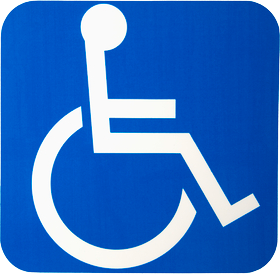
Website Accessibility is the concept of making your website accessible for individuals with disabilities. People with visual and auditory impairments are in need of “assistive technologies” to properly browse a website. If your website is designed properly, the assistive technologies allow users access to the same abilities as those without visual or auditory disabilities.
According to the Disability Status Report presented on January, 2018 by the Yang-Tan Institute on Employment and Disability at the Cornell University ILR School, nearly 12.8% reported one or more type of disability in the US. The study did not include people living in institutions.
Types of impairments that need website accessibility
- Visual blindness (which includes severe visual impairments)
- All levels of color blindness
- Severe auditory impairments
- ADHD
- Tremors
- other disabilities that impair use of a computer
Who needs an accessible website?
The United States Department of Justice, Division of Civil Rights is ruling in accordance to section 508 of the Americans with Disabilities Act (ADA) that government, Federal departments and agencies to make their electronic and information technology (EIT) accessible to people with disabilities, in compliance with Website Accessibility WCAG 2.0 Level AA. Final rule went into effect on January 18, 2018. But just because you are not a Federal agency you should ignore this rule, the practice is that since 2017, several brick-and-mortar businesses have been fined and taken to federal court because they are not in compliance, and they have been required to fix their website.
We recommend the following websites should definitely be accessible:
- Non Profit Organizations
- Banks, credit unions, and other financial institutions
- Hospitals and healthcare facilities
- Pharmacies and medical supply stores
- Retail stores
- Restaurants
- Construction companies with an office
- Law firms
- Real estate brokerages
- Apartment building
What makes a website accessible?
Within website accessibility, based on the WCAG 2.0 requirements, there are 4 categories of accessibility, based on the anagram POUR: perceivable, operable, understandable and robust.
Please note, that the following is not a comprehensive list but an overview of the main concepts. If you would like a complete list you can visit W3C website, and search for WCAG 2.0.
- Perceivable:
Providing text alternatives for non-text content or items such as images, videos, and audio so that screen readers and other technologies can inform visitors the content provided. - Operable: All components of the website that requires user input must be operable for all disability types. These requirements include, but not limited to keyboard accessible, enough time provided to complete tasks for those with disabilities who need more time to complete activities, and the site is designed navigable in a sensical and intuitive manner.
- Understandable:
All text content should be readable and understandable. This includes making the site function in a sensical and intuitive manner, that some with vision impairment would be able to navigate the website without difficulty with the use of screen reader technologies. - Robust:
Website must be properly coded in a manner that the website functions properly on a variety of devices, browsers and assistive technologies. Examples include: proper coding, labeling various functional sections within the code.
Why are so many web designers unaware of accessibility?
Website design is not under the same regulations like construction. For example, when you build a house there are stages of getting permits and inspections, that are not required by a business to create a website. But even before 2017, the risk of financial penalty is there for any business.
We advise hiring a web design team that is trained in website accessibility to avoid penalties. At RK Answers, we provide website accessibility services to help your business get your website up-to-date with website accessibility and other website compliance regulations.